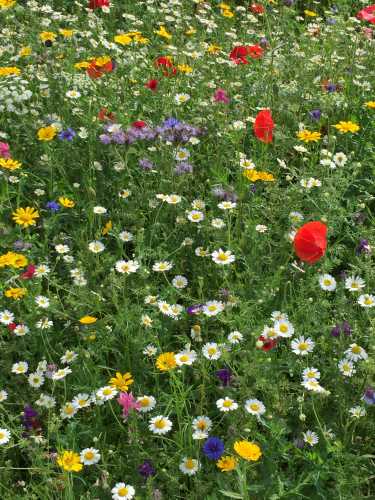Brownfield Sites Can Offer Great Opportunities For Pollinators And Other Wildlife
Updated: 23rd February 2021
The term ‘brownfield site’ usually refers to a site that was previously used for industrial or commercial purposes, and sometimes where clean up of industrial buildings, and possibly waste or pollution, may be complicated or costly, such that it might prevent or deter builders or developers purchasing or redeveloping the land.
It’s also possible that sites may be of historical interest. This is certainly in the UK, where some sites date back to the industrial revolution. There are two such sites local to me. One is now a heritage park comprising a 1.5 mile long valley, is a 70-acre (28 ha) site, with woodlands and a tiered reservoir, along with the remains of copper, brass and cotton mills at one end, and an abbey established in about the year 1132 at the other.
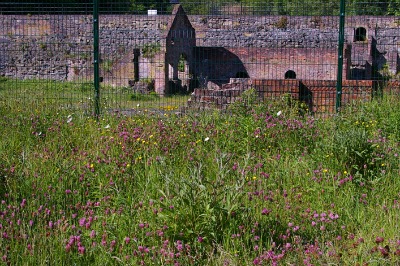 Industrial remains - this site now offers clover, wild orchids, bird's foot trefoil, knapweed and more, and is surrounded by trees and shrubs.
Industrial remains - this site now offers clover, wild orchids, bird's foot trefoil, knapweed and more, and is surrounded by trees and shrubs.
At the opposite end to the abbey is an old
well and place of pilgrimage. One of the great things about this old site is that there is a band of volunteers, plus a few council employees who have helped to make a few enhancements. These have included putting up bird and bat boxes, transplanting wood anemones and wild garlic to help increase its abundance, and mowing of some wildflower areas in autumn.
There is a good variety of trees and shrubs, and there are even old apple trees of various species, which are abundant with blossom in spring, remaining from a time when a row of small cottages had provided housing for local workers. There are many blue bells in spring, and all in all the site attracts many bee species. For example, I have photographed orange-tailed mining bees and ashy mining bees in this area, among others.
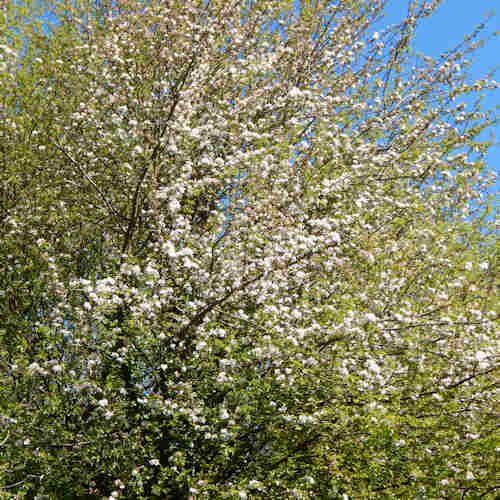 Large old apple trees are covered in blossom
Large old apple trees are covered in blossom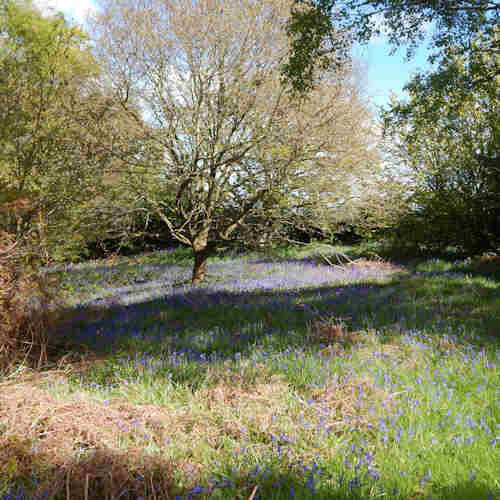 Bluebells and sunny glades
Bluebells and sunny glades
Another site is actually closed to the general public,
because of its role during WWII. I had
the good fortune to enter the site, which is now a tremendous haven for
wildlife, and where rare species of plant and an astonishing variety of fungi
grow.
Unfortunately, I was only able to snap a few photographs with the very poor camera I had at the time (and the batteries ran out anyway). I managed to take just a few photographs within a restricted area.
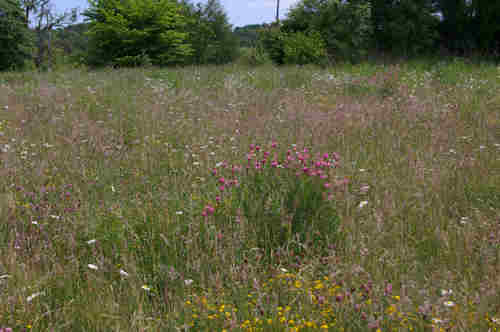 Wildflower meadow at the site - generally closed to the public
Wildflower meadow at the site - generally closed to the publicOn close inspection, the wildflower meadow has an abundant variety of flowers - superb for pollinators.
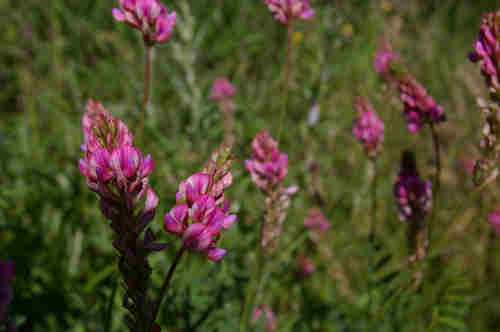 Lovely Sainfoin is present among the wildflowers.
Lovely Sainfoin is present among the wildflowers.
But even brownfield sites not destined for heritage status and protection, can sometimes provide opportunities for wildlife, if only on a temporary basis. Many wildflowers thrive in poor soil conditions. Bats and birds may make homes in ruins. In order to ensure brownfield sites can be managed or left to the advantage of bees and other wildlife, it is vital that the area is not sprayed with toxic pesticides, or even ‘tidied’ of the wildflowers that grow there.
As members of the public, we can help by thinking twice before we complain about 'weeds' growing in abandoned industrial areas. Some councils may even be prepared to enhance the quantity of wildflowers, and put up bird and bat boxes - if asked!
If you found this page helpful or interesting, I'd really be grateful if you would share it with others - if not this page, perhaps another, such as Gardening For Bees.
Thank you so much :) .
